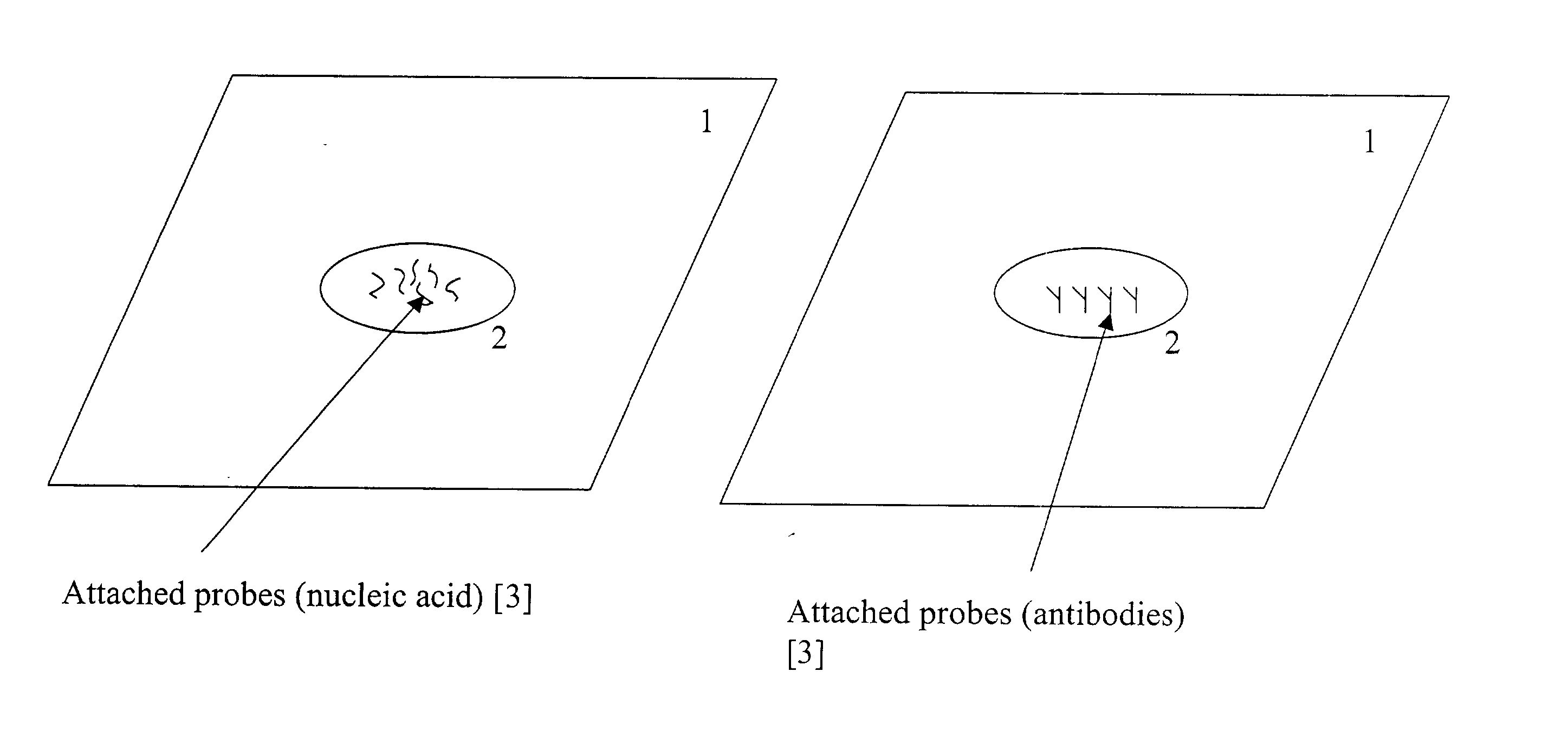Method of detecting molecular target by particulate binding
a technology of molecular target and particulate binding, which is applied in the field of detection and quantification of specific molecular interactions, can solve the problems of inconvenient use, laborious and inconvenient, and need at least one hour to achieve the effect of detecting the target molecularly, and achieving the effect of reducing the number of detection errors
- Summary
- Abstract
- Description
- Claims
- Application Information
AI Technical Summary
Benefits of technology
Problems solved by technology
Method used
Image
Examples
example one
[0181] Early Diagnosis of Tuberculous Infection
[0182] The ribosomal ribonucleic acid (rRNA) of Mycobacterium tuberculosis (the cause of human tuberculosis) is the target of detection in the AMPLIFIED.TM. Mycobacterium Tuberculosis Direct Test (References 9-18).
[0183] Whereas amplification is required in the above test (Transcription Mediated Amplification (TMA)), the current invention requires the simple process of breakdown of the bacterial cell wall. This invention can detect as little as a few copies of the bacterial rRNA. No prior amplification is necessary.
example two
[0184] Early Diagnosis of Acute Myocardial Infarction
[0185] The timely laboratory diagnosis of an acute myocardial infarction (heart attack) is potentially lifesaving because therapeutic interventions can be instituted. These interventions are not without their own risks and mandate an accurate test.
[0186] Until now, tests are either not sensitive enough or non-specific. For example, the earliest indicator of myocardial infarction is elevation of serum myoglobin, which is detectable at 6 hours after infarction (References 12-15). However, myoglobin is also present in skeletal muscle and its elevation is not specific for myocardial injury, requiring confirmation by a second assay of serum troponin T
[0187] (http: / / www.roche.com / diagnostics / news / 1998 / 981127a.html), a marker that is elevated later than myoglobin.
[0188] The ability to detect minute quantities of cardiac troponin T in the earliest stages of an acute myocardial infarction requires both specificity and sensitivity. This is ...
example three
[0190] EXAMPLE THREE
[0191] Measurement of Viral Load
[0192] Many diseases have a viral cause. An example is HIV (infection by the human immunodeficiency virus). Whereas the disease is controllable by anti-viral agents, these are all very expensive. Because the virus is prone to mutation, not all patients are responsive to the same drug(s) at different periods. Monitoring the viral load is one way to determine drug efficacy and disease status.
[0193] Using this method, viral load study is rendered highly accurate, simple, fast and economical.
[0194] The principles of assay are described above.
[0195] Any virus can be studied using this method, provided the genetic sequence is known.
[0196] Thus, while there have shown and described and pointed out fundamental novel features of the invention as applied to a preferred embodiment thereof, it will be understood that various omissions and substitutions and changes in the form and details of the devices illustrated, and in their operation, may ...
PUM
| Property | Measurement | Unit |
|---|---|---|
| Fraction | aaaaa | aaaaa |
| Concentration | aaaaa | aaaaa |
| Magnetic field | aaaaa | aaaaa |
Abstract
Description
Claims
Application Information
 Login to View More
Login to View More - R&D
- Intellectual Property
- Life Sciences
- Materials
- Tech Scout
- Unparalleled Data Quality
- Higher Quality Content
- 60% Fewer Hallucinations
Browse by: Latest US Patents, China's latest patents, Technical Efficacy Thesaurus, Application Domain, Technology Topic, Popular Technical Reports.
© 2025 PatSnap. All rights reserved.Legal|Privacy policy|Modern Slavery Act Transparency Statement|Sitemap|About US| Contact US: help@patsnap.com



